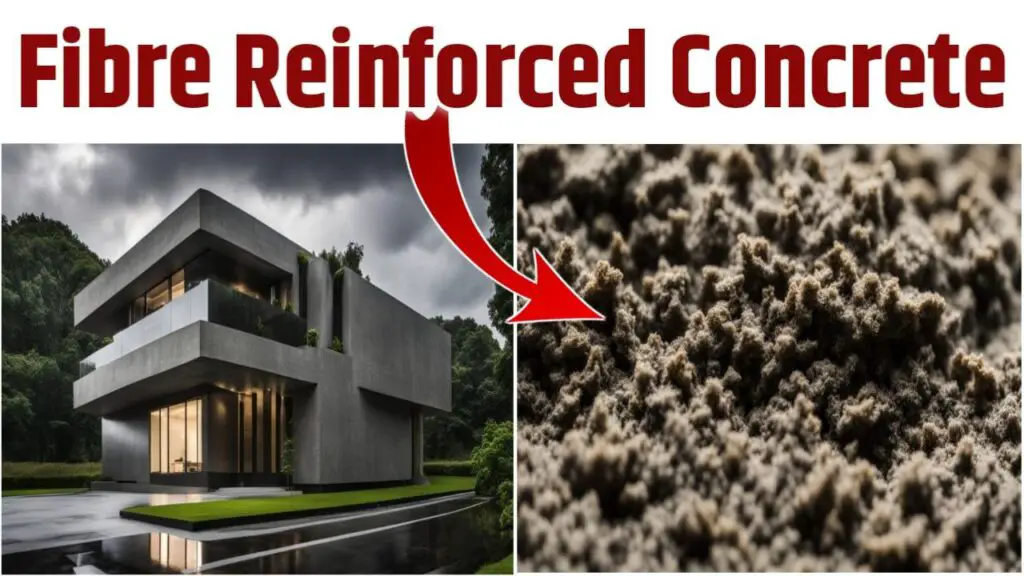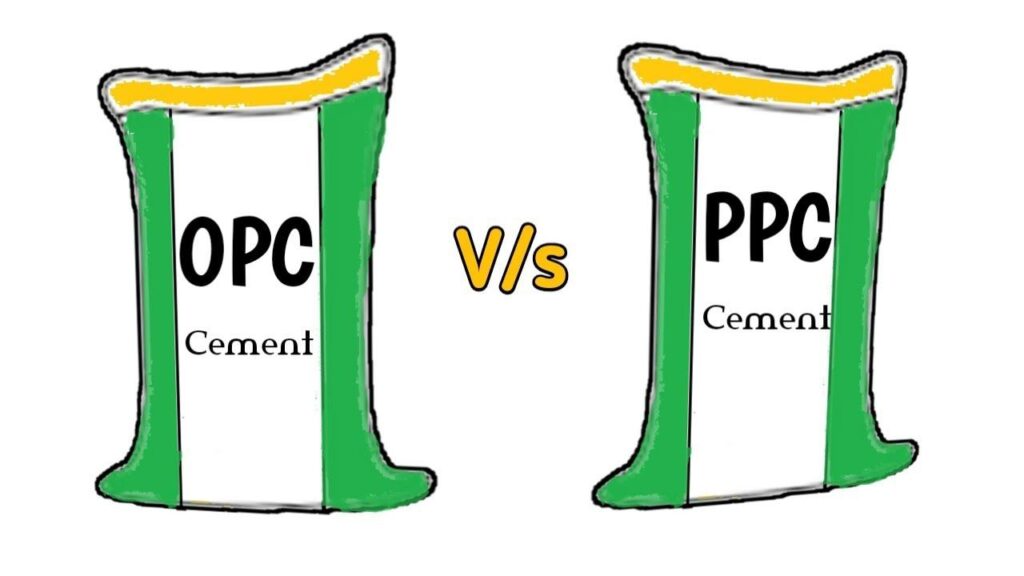Have you ever wondered how to make concrete even stronger and more durable? Is there a way to enhance its properties and make it more resistant to cracks and other forms of deterioration? Well, the answer lies in fibre reinforced concrete (FRC). But what exactly is FRC, and what makes it different from conventional concrete?
Imagine being able to construct buildings and infrastructure that can withstand the test of time, even in the harshest conditions. This is where FRC comes into play, providing a viable solution for engineers and constructors alike. From increased strength to improved crack resistance, FRC offers a range of benefits that traditional concrete cannot match.
In this article, I will delve into the world of fibre reinforced concrete, exploring its different types, various applications, and the advantages it offers. I will also discuss the disadvantages of using FRC to ensure you have a complete understanding of this construction material. So, are you ready to discover the secrets of FRC?
Key Takeaways:
- Fibre reinforced concrete (FRC) is a construction material that enhances the properties of conventional concrete.
- FRC offers increased strength, improved crack resistance, and enhanced durability.
- There are different types of FRC, including steel fiber reinforced concrete, polypropylene fiber reinforced cement mortar & concrete, gfrc glass fiber reinforced concrete, asbestos fibers, carbon fibers, and organic fibers.
- FRC finds applications in various construction projects, from residential to commercial and infrastructure.
- While FRC offers several advantages, it also has certain drawbacks that need to be considered.
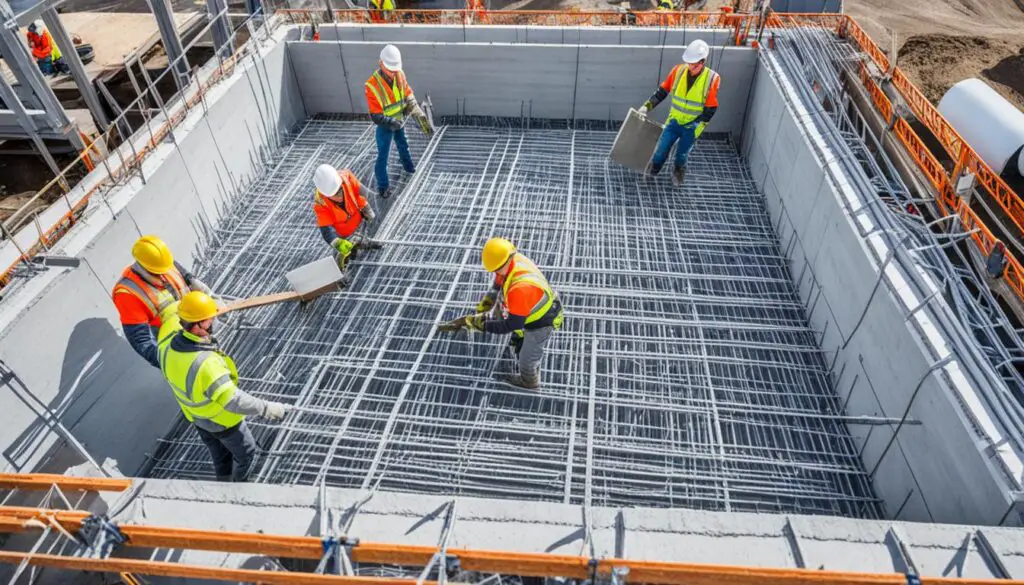
Effect of Fibres in Concrete
Fibres play a crucial role in altering the properties of concrete. When fibres are added to the mix, they create an intricate network that enhances the performance of the final product. The effect of fibres in concrete can lead to significant improvements in various aspects, making it a preferred choice in construction projects.
One of the key benefits of incorporating fibres in concrete is the enhancement of its mechanical properties. The addition of fibres improves the tensile and flexural strength of concrete, making it more resistant to cracking and structural failure. This is particularly advantageous in applications where the concrete needs to withstand heavy loads or external forces.
Furthermore, fibres in concrete help in increasing the durability and longevity of structures. They act as reinforcement, providing resistance against shrinkage, thermal cracking, and impact. The improved crack resistance of fibre reinforced concrete (FRC) ensures that the structure remains intact and functional over an extended period.
Another important effect of fibres in concrete is the improvement in its resistance to fire and extreme temperatures. The fibres act as a barrier, slowing down the spread of fire and reducing the risk of structural collapse. This makes FRC a suitable choice in buildings where fire safety is a critical consideration.
Types of Fibres and their Effects
Fibre reinforced concrete can be made using various types of fibres. Each type has its own unique properties and effects on the concrete mixture. Here are a few commonly used types:
- Steel Fibers: Steel fibres improve the ductility and impact resistance of concrete, making it suitable for applications that require high toughness and durability.
- Polypropylene Fibers: Polypropylene fibres enhance the workability and durability of concrete while reducing the risk of cracking due to shrinkage and temperature changes.
- Glass Fibers: Glass fibres provide excellent resistance to alkali, making them suitable for concrete subjected to harsh chemical environments.
- Carbon Fibers: Carbon fibres offer high strength and stiffness, making them ideal for applications requiring lightweight and high-performance concrete.
These different types of fibres have specific effects on the overall properties of concrete. By selecting the appropriate fibre type based on the desired outcomes, construction professionals can achieve the desired performance characteristics in their concrete structures.
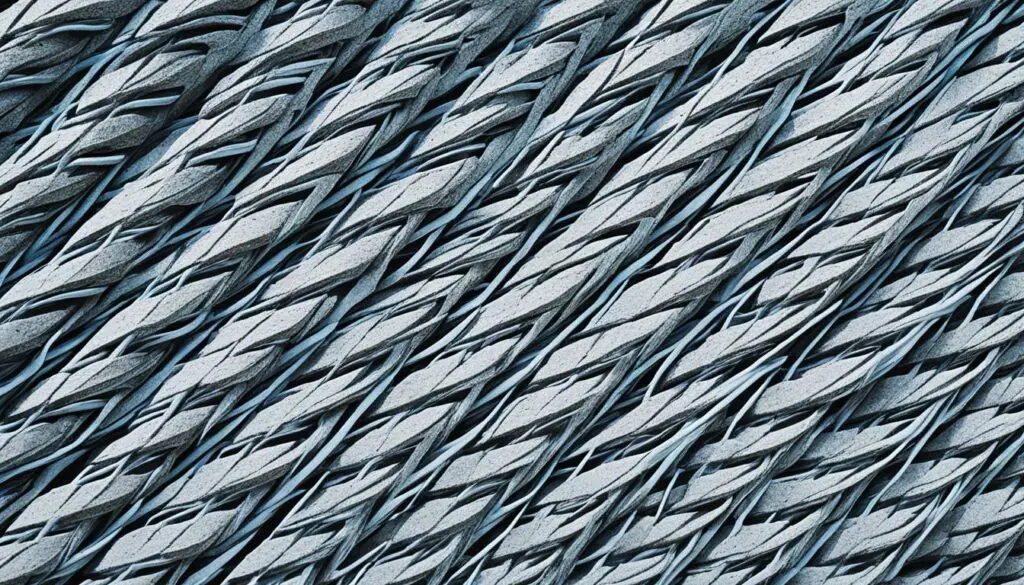
The Necessity of Fibre Reinforced Concrete
There are certain circumstances where the use of fibre reinforced concrete (FRC) becomes necessary. FRC offers distinct advantages over conventional concrete, making it the preferred choice in many construction projects. By understanding the necessity of FRC, you can identify when it should be used to ensure the optimal performance and durability of your structures.
One of the primary reasons for the necessity of FRC is its ability to enhance the strength and durability of concrete. The inclusion of fibers in the concrete matrix significantly improves its tensile strength, making it more resistant to cracking and structural failure. This is particularly important in applications where the concrete is subjected to heavy loads or dynamic forces.
Additionally, FRC provides increased durability and longevity compared to traditional concrete. The fibers reinforce the concrete matrix, improving its resistance to shrinkage, cracking, and abrasion. This ensures that the structures built with FRC maintain their integrity even under harsh environmental conditions, reducing the need for frequent repairs and maintenance.
FRC in Seismic Zones
One specific situation where the necessity of FRC becomes evident is in seismic zones. The properties of FRC make it an ideal choice for constructing buildings and infrastructures in areas prone to earthquakes. The fibers in FRC help to distribute and dissipate the energy caused by seismic activity, providing enhanced structural stability and reducing the risk of catastrophic failure.
The use of fibre reinforced concrete is crucial in seismic zones as it enhances the structural integrity and resiliency of buildings, ensuring the safety of occupants during an earthquake.
FRC is also necessary in applications that require superior crack resistance. The addition of fibers to the concrete matrix inhibits crack propagation, limiting their size and extent. This is particularly beneficial in structures where cracks can compromise the performance and aesthetics, such as architectural elements or precast components.
FRC in Architectural Applications
Architectural applications often demand the use of FRC due to its versatility and ability to achieve complex and intricate designs. The added flexibility of FRC allows for the creation of slender and lightweight elements without compromising strength or structural integrity. This enables architects to push the boundaries of design while ensuring the durability and safety of their creations.
In conclusion, understanding the necessity of fibre reinforced concrete is crucial for selecting the right material for your construction projects. FRC offers improved strength, durability, crack resistance, and versatility compared to conventional concrete. Whether in seismic zones or architectural applications, FRC proves its indispensability in ensuring the longevity and performance of your structures.
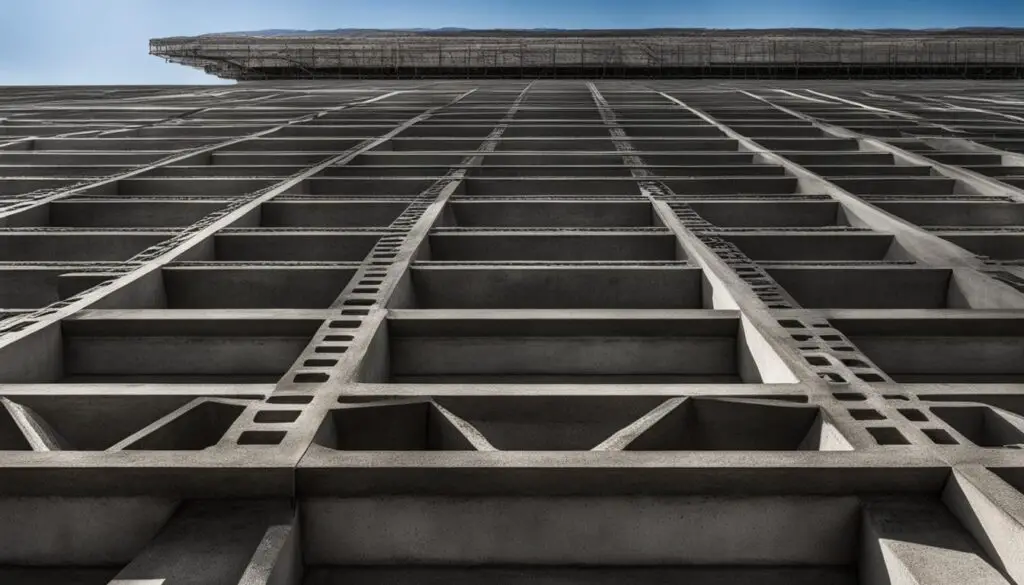
Factors Affecting Properties of Fibre Reinforced Concrete
Fibre reinforced concrete (FRC) is a construction material that exhibits improved strength, durability, and crack resistance compared to conventional concrete. The properties of FRC are influenced by several factors that must be carefully considered during the design and construction process. Understanding these factors is essential for achieving optimal results in FRC applications.
One of the key factors affecting the properties of FRC is the relative fibre matrix stiffness. The stiffness of the fibres in relation to the surrounding concrete matrix determines the level of reinforcement provided by the fibres. Fibres with higher stiffness contribute to increased tensile and flexural strength in the concrete, enhancing its overall performance.
The volume of fibres is also an important consideration. Increasing the fibre volume in the mix can improve the crack resistance and impact resistance of the concrete. However, excessive fibre volume can lead to difficulties in workability and compaction, affecting the quality of the final product.
The aspect ratio of the fibre, which is the ratio of its length to its diameter, influences the reinforcement provided by the fibres. Fibres with higher aspect ratios tend to offer greater strength and toughness to the concrete. It is important to select fibres with appropriate aspect ratios to optimize the performance of FRC.
The orientation of fibres within the concrete matrix also plays a significant role in determining the properties of FRC. Properly oriented fibres can increase the crack resistance and tensile strength of the concrete in specific directions, improving its overall structural integrity.
Additionally, the workability and compaction of the concrete mixture impact the dispersion and alignment of fibres within the matrix. Ensuring optimal workability and compaction is crucial for achieving a uniform distribution of fibres and maximizing their reinforcement effect in the final product.
The size of the coarse aggregate used in the FRC mix can affect the interfacial bond between the fibres and the matrix. Smaller aggregate sizes provide a larger surface area for the bonding between the fibres and the matrix, resulting in improved mechanical properties of the concrete.
Furthermore, the mixing process plays a vital role in the homogeneous distribution of fibres throughout the concrete. Improper mixing can lead to the clustering of fibres, compromising their effectiveness in reinforcing the concrete. It is essential to follow appropriate mixing techniques to ensure a uniform distribution of fibres.
Overall, the relative fibre matrix stiffness, volume of fibres, aspect ratio of the fibre, orientation of fibres, workability and compaction of concrete, size of coarse aggregate, and mixing process are all factors that significantly influence the properties of fibre reinforced concrete. By carefully considering these factors, engineers and construction professionals can design and construct FRC with enhanced performance and durability.
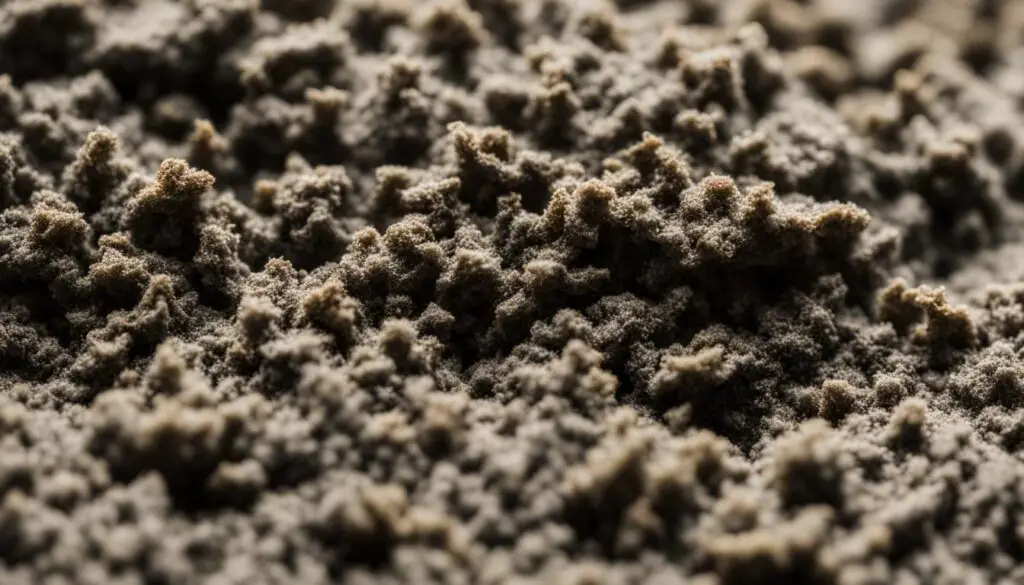
Factors Affecting Properties of Fibre Reinforced Concrete
| Factor | Description |
|---|---|
| Relative fibre matrix stiffness | The stiffness of the fibres in relation to the surrounding concrete matrix |
| Volume of fibres | The amount of fibres in the concrete mix |
| Aspect ratio of the fibre | The ratio of fibre length to diameter |
| Orientation of fibres | The alignment of fibres within the concrete matrix |
| Workability and compaction of concrete | The ease of handling and compacting the concrete mix |
| Size of coarse aggregate | The size of the larger aggregate particles in the mix |
| Mixing process | The method used to mix the fibres with the concrete ingredients |
Different Types of Fibre-Reinforced Concrete
Fibre reinforced concrete (FRC) is available in various types, each with unique characteristics and applications. Understanding these types is crucial in selecting the most suitable FRC for your specific construction needs. Let’s explore seven different types of FRC:
1. Steel Fiber Reinforced Concrete
Steel fiber reinforced concrete incorporates steel fibers into the concrete mix. These fibers improve the concrete’s tensile strength, enhance crack resistance, and increase toughness. Steel fiber reinforced concrete is commonly used in industrial flooring, precast elements, and tunnel linings.
2. Polypropylene Fiber Reinforced Cement Mortar & Concrete
Polypropylene fiber reinforced cement mortar and concrete contain polypropylene fibers, which enhance the concrete’s impact resistance, reduce shrinkage cracks, and improve freeze-thaw durability. This type of FRC is often used in architectural concrete, bridge decks, and pavements.
3. GFRC (Glass Fiber Reinforced Concrete)
GFRC, or glass fiber reinforced concrete, is a composite material that combines concrete and glass fibers. It offers excellent tensile strength, flexibility, and durability. GFRC is widely used in architectural applications, such as cladding, decorative elements, and lightweight panels.
4. Asbestos Fibers
Asbestos fibers were historically used as reinforcement in concrete due to their high tensile strength and heat resistance. However, due to health concerns related to asbestos exposure, the use of asbestos fibers in construction materials has been heavily regulated or banned in many countries.
5. Carbon Fibers
Carbon fibers are lightweight, high-strength fibers that provide exceptional tensile strength and durability to concrete. They are commonly employed in applications requiring high-performance concrete, such as aerospace structures, high-rise buildings, and bridge components.
6. Organic Fibers
Organic fibers derived from natural materials, such as jute, coir, or sisal, can be used to reinforce concrete. These fibers offer moderate strength and are suitable for applications where lower reinforcement is required, such as in floor slabs, roofing tiles, and non-structural elements.
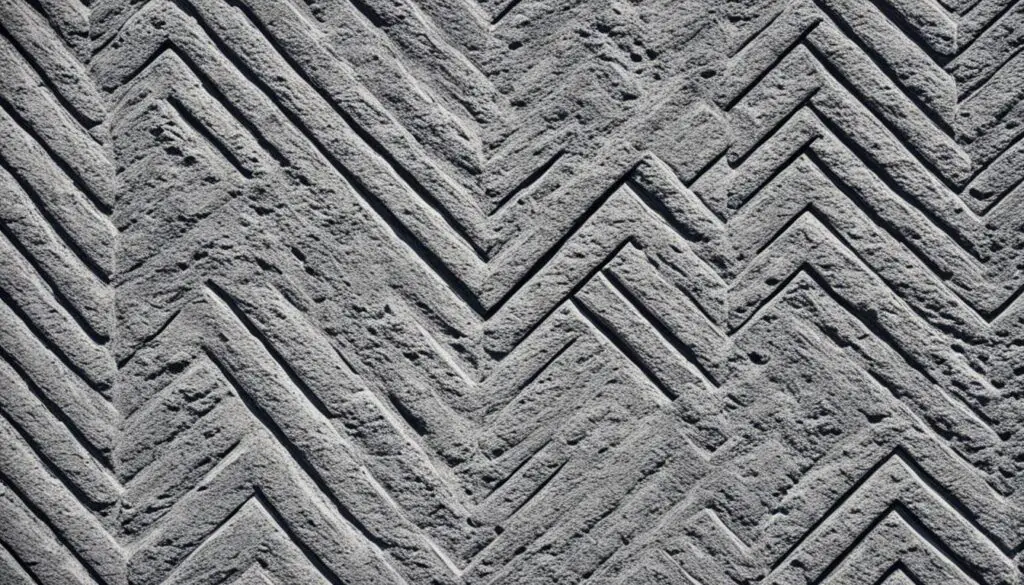
Application of Fiber-Reinforced Concrete
Fiber-reinforced concrete (FRC) has a wide range of applications in various construction projects. Its unique properties and enhanced performance make it a preferred choice in different construction scenarios, providing improved durability and structural integrity.
Residential Construction:
- Foundations and footings
- Floors and pavements
- Walls and partitions
Commercial Construction:
- High-rise buildings
- Retail and office spaces
- Warehouses and industrial facilities
Infrastructure Projects:
- Bridges and flyovers
- Tunnels and underground structures
- Highways and roads
Transportation:
- Runways and taxiways
- Ports and harbors
- Railway platforms
Water and Wastewater Projects:
- Dams and reservoirs
- Water treatment plants
- Sewage and drainage systems
Quotes:
FRC provides excellent crack resistance and enhanced performance in applications such as floor slabs, where maintaining structural integrity is crucial. It reduces the likelihood of cracks caused by shrinkage and temperature variations, resulting in superior long-term durability.
H3: Advantages of Using FRC in Construction
Fiber-reinforced concrete offers several advantages that contribute to its widespread application:
- Increased Tensile Strength: The addition of fibers enhances the tensile strength and ductility of the concrete, making it more resistant to cracking and providing structural stability.
- Improved Crack Resistance: FRC exhibits improved crack resistance, minimizing the formation and propagation of cracks even under significant loads.
- Enhanced Durability: The fibers in FRC improve its resistance to harsh environmental conditions, such as freeze-thaw cycles, chemical exposure, and abrasion, resulting in enhanced durability and longevity.
- Reduced Maintenance Requirements: The enhanced durability of FRC reduces the need for frequent repairs and maintenance, saving time and costs in the long run.
- Superior Fire Resistance: FRC offers better fire resistance compared to conventional concrete, making it a suitable choice for structures where fire safety is a priority.
- Impact Resistance: FRC exhibits improved resistance to impact, making it suitable for structures that may encounter heavy loads or potential impact events.
By leveraging the benefits of fiber-reinforced concrete, construction projects can achieve enhanced strength, durability, and overall performance. Whether it’s a residential, commercial, or infrastructure project, FRC offers a reliable solution to meet the specific demands of each application.
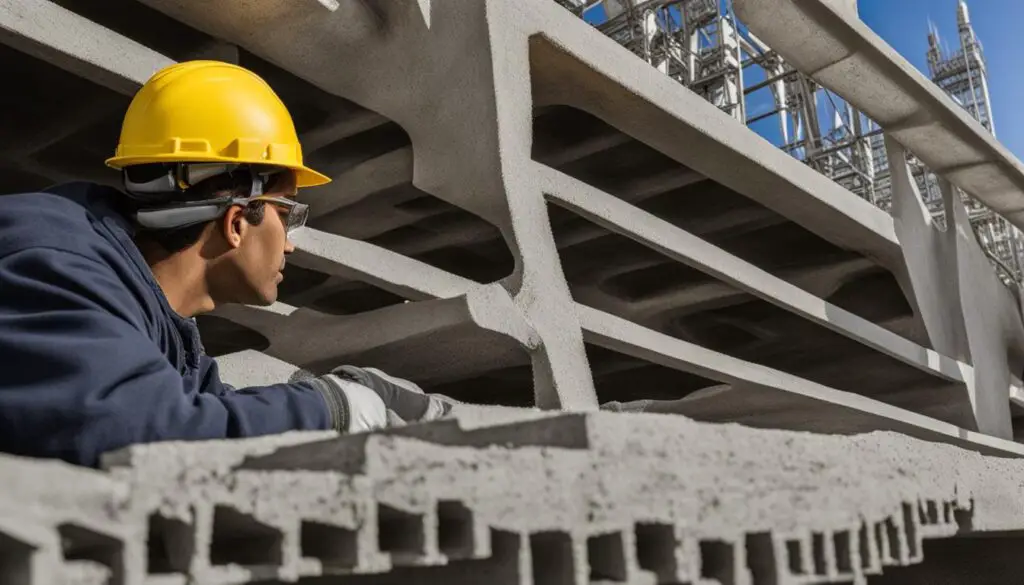
With its versatile applications and numerous advantages, fiber-reinforced concrete continues to play a significant role in modern construction, revolutionizing the way we build structures for increased longevity and structural integrity. As technology progresses and new fiber types are introduced, the application opportunities for FRC are expected to expand further, enabling innovative and sustainable construction practices.
Advantages of Fibre Reinforced Concrete
Fibre reinforced concrete (FRC) offers numerous advantages over traditional concrete, making it a popular choice in construction projects. Let’s explore some of the key advantages of using FRC:
Increased Tensile and Flexural Strength
One of the significant advantages of FRC is its enhanced tensile and flexural strength. The incorporation of fibres in the concrete matrix helps distribute and dissipate tensile forces, resulting in improved structural integrity and resistance to cracking.
Improved Crack Resistance
FRC exhibits excellent crack resistance due to the inherent properties of the fibres. The fibres act as an internal reinforcement, resisting the propagation of cracks and reducing their width and length. This advantage not only enhances the concrete’s durability but also reduces the need for frequent repairs and maintenance.
Enhanced Durability
The superior durability of FRC makes it an ideal choice for various applications. The fibres in FRC effectively resist chemical attacks, such as corrosion from alkalis and chlorides, providing long-term durability even in harsh environments. Additionally, the reduced permeability of FRC improves its resistance to water penetration and freeze-thaw cycles.
Reduced Maintenance Requirements
Using FRC can significantly reduce maintenance requirements compared to traditional concrete. The improved crack resistance and enhanced durability minimize the occurrence of cracks, spalling, and other forms of deterioration, resulting in reduced repair and maintenance costs over the lifespan of the structure.
Better Resistance to Fire and Impact
FRC offers superior fire resistance due to the use of specific fibre types. Fibres such as glass or steel can provide additional fire protection by inhibiting the spread of flames and improving the structural stability of the concrete. Furthermore, the incorporation of fibres in FRC enhances its impact resistance, making it suitable for structures subjected to dynamic loads or potential impact events.
“The use of fibre reinforced concrete offers significant advantages in terms of strength, crack resistance, durability, maintenance requirements, as well as fire and impact resistance. These advantages make FRC a valuable choice in a wide range of construction projects.”
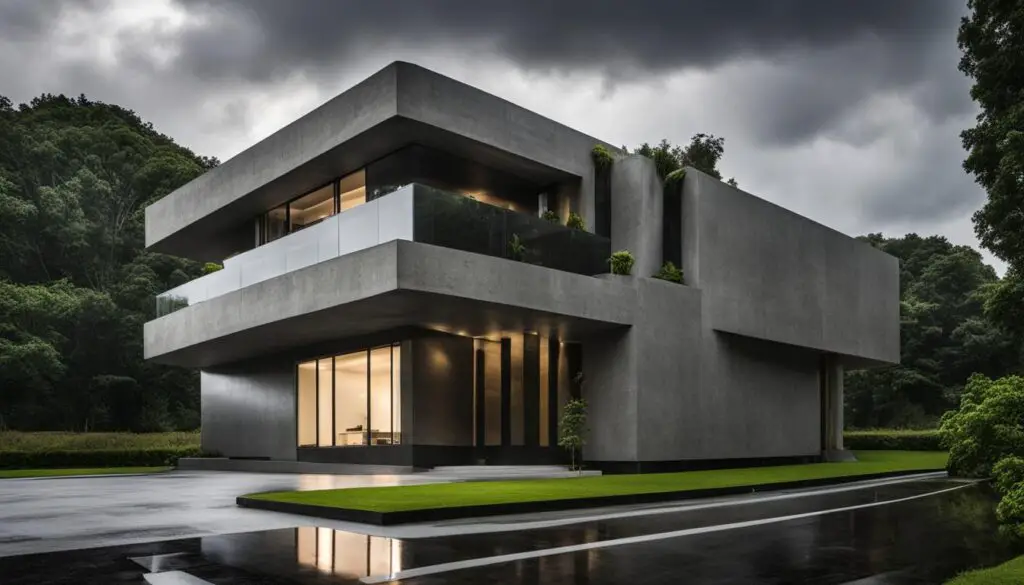
Disadvantages of Fibre Reinforced Concrete
Fibre reinforced concrete (FRC) offers numerous benefits, such as improved tensile and flexural strength, enhanced crack resistance, and increased durability. However, like any construction material, FRC also has its share of disadvantages that need to be considered.
1. Increased Costs
One of the main drawbacks of using FRC is the higher cost compared to traditional concrete. The inclusion of fibres and the additional production requirements can contribute to increased material costs, making FRC less cost-effective for some projects.
2. Potential Fiber Corrosion
In certain environments, the fibres used in FRC may be susceptible to corrosion over time. This can result in a degradation of the material’s mechanical properties and compromised structural integrity. Proper precautions, such as selecting corrosion-resistant fibres and using suitable protective coatings, must be taken to mitigate this risk.
3. Challenges in Mix Design and Placement
The presence of fibres in concrete can pose challenges during mix design and placement processes. Achieving a uniform distribution of fibres throughout the concrete matrix can be challenging, impacting the material’s overall performance and consistency. Specialized mix designs and careful placement techniques are often required to overcome these challenges.
4. Limited Availability of Certain Fiber Types
Not all fibre types may be readily available in certain regions or markets. This lack of availability can limit the options for incorporating specific fibre types into FRC, potentially affecting the material’s desired properties and performance.
| Disadvantages of Fibre Reinforced Concrete |
|---|
| Increased costs |
| Potential fiber corrosion |
| Challenges in mix design and placement |
| Limited availability of certain fiber types |
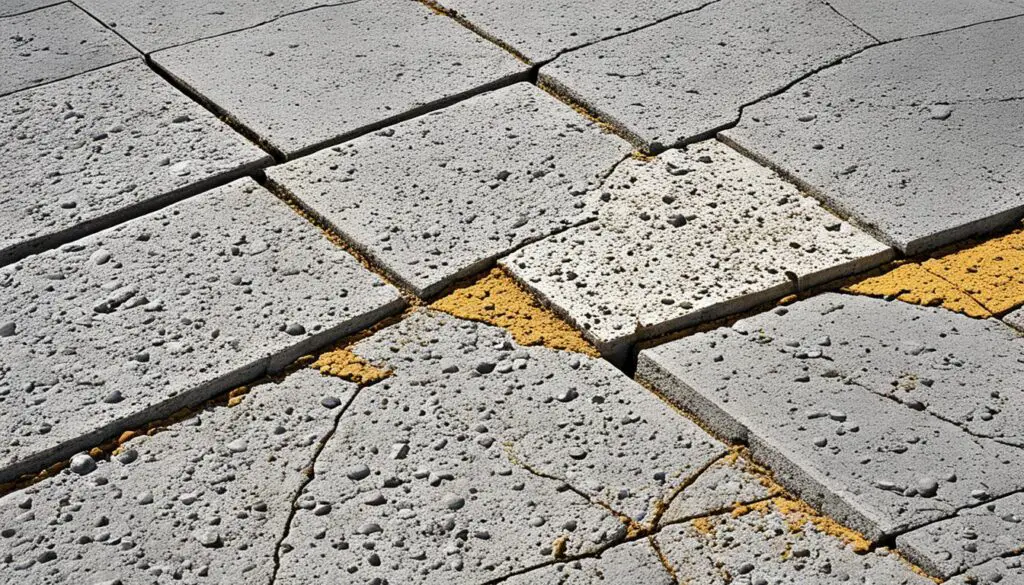
Despite these disadvantages, fibre reinforced concrete remains a valuable construction material that can be used in a variety of applications. By understanding these drawbacks, construction professionals can make informed decisions regarding the suitability of FRC for their specific projects.
Conclusion
In conclusion, fibre reinforced concrete (FRC) offers a versatile and durable solution for construction projects. By understanding the effects of fibres, the necessity of using FRC, the factors influencing its properties, and the advantages and disadvantages it offers, you can make informed decisions in selecting and utilizing FRC.
With the right application, FRC can significantly enhance the performance and longevity of concrete structures. Its various types, such as steel fiber reinforced concrete, polypropylene fiber reinforced cement mortar & concrete, gfrc glass fiber reinforced concrete, asbestos fibers, carbon fibers, and organic fibers, cater to diverse construction needs.
Embracing FRC can provide numerous benefits, including increased tensile and flexural strength, improved crack resistance, enhanced durability, reduced maintenance requirements, and better resistance to fire and impact. However, it is important to consider the disadvantages as well, such as increased costs and potential fiber corrosion.
By carefully weighing the pros and cons, you can leverage the advantages of FRC while mitigating any drawbacks. Ultimately, incorporating fibre reinforced concrete into your construction projects can contribute to stronger, more resilient structures that stand the test of time.
Thanks For the Great Attention!
Good Bye & Take Care
Happy Learning
Also, Read,
1000sqft House Plinth Beam Cost
1500Sqft House Construction Cost In 2024
1000sqft house construction cost in 2024
FAQ
Q: What is fibre reinforced concrete?
A: Fibre reinforced concrete (FRC) is a type of concrete that contains fibres, such as steel, polypropylene, or glass, to improve its performance and durability. These fibres are evenly distributed throughout the concrete, enhancing its tensile strength, crack resistance, and impact resistance.
Q: What is the effect of fibres in concrete?
A: Fibres in concrete alter its properties by enhancing its tensile strength, improving crack resistance, and increasing impact resistance. They hold the concrete together, preventing the formation and propagation of cracks, and improve its overall structural integrity.
Q: Why is fibre reinforced concrete necessary?
A: Fibre reinforced concrete is necessary in situations where conventional concrete is unable to meet the required performance criteria. It is used to enhance tensile strength, reduce crack formation and propagation, and improve the durability and longevity of concrete structures.
Q: What factors affect the properties of fibre reinforced concrete?
A: Several factors influence the properties of fibre reinforced concrete, including the relative fibre matrix stiffness, volume of fibres, aspect ratio of the fibre, orientation of fibres, workability and compaction of concrete, size of coarse aggregate, and the mixing process.
Q: What are the different types of fibre-reinforced concrete?
A: There are various types of fibre-reinforced concrete, including steel fiber reinforced concrete (SFRC), polypropylene fiber reinforced (PFR) cement mortar & concrete, GFRC (glass fiber reinforced concrete), asbestos fibers, carbon fibers, and organic fibers.
Q: What are the applications of fiber-reinforced concrete?
A: Fiber-reinforced concrete finds applications in a wide range of construction projects, including residential, commercial, and infrastructure. It is used in foundations, slabs, walls, pavements, bridge decks, tunnels, and precast elements, among others.
Q: What are the advantages of fibre reinforced concrete?
A: The advantages of fibre reinforced concrete include increased tensile and flexural strength, improved crack resistance, enhanced durability, reduced maintenance requirements, and better resistance to fire and impact. It offers improved performance and longevity compared to traditional concrete.
Q: What are the disadvantages of fibre reinforced concrete?
A: Despite its advantages, fibre reinforced concrete has certain drawbacks. These may include increased costs compared to traditional concrete, potential fiber corrosion, challenges in mix design and placement, and limited availability of certain fiber types.

